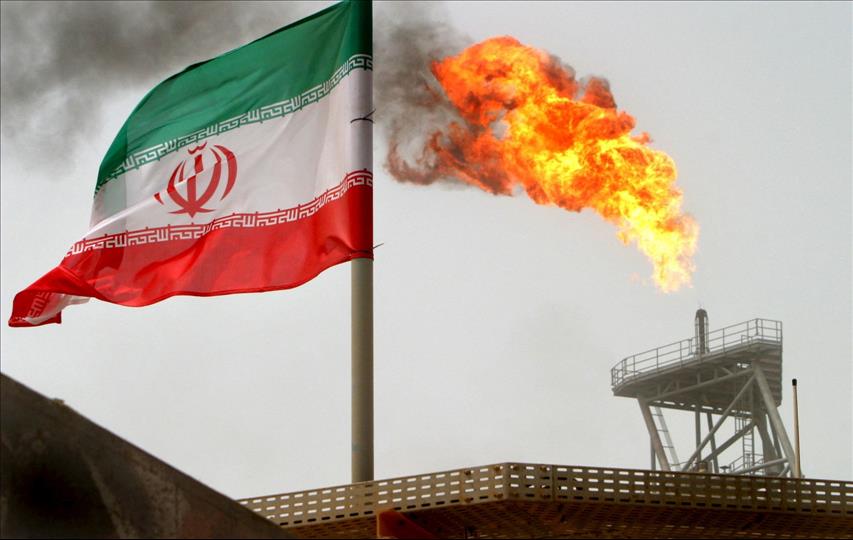(MENAFN- AzerNews)

Rena Murshud read more ...the restrictions after the revolution in Iran,
Part 2
The political analyst Sadraddin Soltan says that after the
establishment of the theocratic regime in Iran, the hijab rule was
first introduced. Among this society, it was considered the
greatest pressure against personal freedom. Women who resisted this
practice were arrested, beaten, and even executed. The Tehran
regime imposed this rule on society by force. The results of this
regime are currently manifesting themselves in the country. While
there is no compelling or violence in the Quran, the country
enforced this rule by force using the Islamic religion.
The second issue is the constitution. In contrast to the King's
era, the constitution implemented by the current regime keeps the
freedom of language, culture and press under constant control.
People belonging to many ethnic groups living in Iran cannot speak
any language except Persian and Armenian. While half of the country
is made up of Azerbaijani Turks, there are not only schools in
Azerbaijani or Turkish, but even speaking in this language is not
allowed. And the most terrible thing is that if the prohibitions
were not followed, they were prevented as a result of pressure.
This tradition is an example of the continuation of the Panfarcism
policy of the Iranian authorities, which existed from the time of
Reza Pahlavi.
But the question arises, could those who came to power
after him be able to do what the king could not do?
"The leading person in Iran is not the president, but the
supreme religious leader of the country according to the
constitution, and that person is Ayatollah Seyed Ali Khamenei in
Iran. At the same time, the supreme leader is elected by the
Khubrigan council, a council of religious experts, which has more
than 80 members. It is he who gives all the instructions for the
country, and his decisions are implemented by the Supervisory
Board.
Now a bit more detailed...
After the revolution, the first president was Abulhasan
Banisadr, and after him, the second president, who was in power for
28 days, was Mohammadali Rajai. Later, Ruhullah Khomeini was
elected supreme leader, and Ali Akbar Hashemi Rafsanjani was
elected president. Although all the presidents who came to power in
Iran carried out economic, political and social reforms, none of
them brought results. For example, although Mohammad Khatami, who
came to power in 1997, carried out reforms on culture and economy,
and Mahmoud Ahmadinejad, who came to power in 2005, on social
issues, none of them yielded results because he was the supreme
leader. On the eve of Mahmoud Ahmadinejad's second term in power, a
new line called "Green Movement" was formed. According to their
thinking, the country will act under the name of the Islamic
Republic after that time. Although the prime minister, chairman and
many presidents supported the movement, it did not last long. The
initiatives put forward by the presidents in power did not bring
any results.
What is Iran's relationship with neighboring
countries?
"Iran, the country whose president is power of substitute has
neither an ally nor a normal relationship with Muslim countries.
The constant tense situation with Pakistan, Afghanistan, and
uncertain relations with Turkmenistan and Turkiye are ongoing. The
relationship with Azerbaijan is also clear. It is because Iran
claims hegemony. According to their thinking, Iran is the biggest
country in the region and all the countries of the region should
reckon with it. Iran's desire in regional countries; to create a
5th colony in Azerbaijan, Turkiye, Iraq, and Syria. Iran also
interferes in the internal affairs of Arab countries. The Iranian
government has a branch outside the country called Quds, which is
engaged in counterintelligence activities. In fact, it is meant to
show Armenia as a neighbor and normal relationship, but Iran uses
it as a tool against Azerbaijan and Turkiye.
As regards the headline - the terror-stricken Iran, is the
matter of its domestic and foreign terrorism, while it acts all of
these thing under the guise of Islam.
The Iranian government had a kind of cannibal character. This
regime, which came to power with the decline of the revolution, has
never made fair and transparent decisions and has not even created
the conditions for it.
Terrorism in Iran can be compared to the activities of the
Bolsheviks who overthrew the tsarist regime in Russia and destroyed
their descendants. They had a saying - "Red revolution and white
terror". The Bolshevik movement, which is essentially the same, is
also taking place in Iran. For some reason, Iran sometimes replaced
this terror with execution; implements oppositional thinking to
eliminate those who oppose the government. However, Iran does not
think that this event has a boomerang effect. As an example, one
can take the killing of Ayatollah Abbas Ali Soleimani, a member of
the Council of Experts, in Babolsar as a result of an armed attack.
Many of the previous incidents are recurred terrorist attacks
against the Iranian government. Iran does not think that oppression
and executions against people, terrorism against other countries
cause hatred against the government.
The undisclosed oppressive methods of Iran, which has
not yet been announced to the world
Why does the Pahlavi's government, which was overthrown by the
people's protest, want to destroy the mullah's regime now?
As we know, all revolutions have a condition. Discontents arose
from the society when the government was not managed properly.
Discontents arise between the society and the government because
the government has collapsed and the resources are running out. As
a protest, the society burns pictures of top leaders and chants
slogans against the government. The factors that led to the
overthrow of the king can also be attributed to the current
government.
The deadly weapon that can end the world -
nuclear...
It is said that Iran has the power to develop nuclear
weapons. It is interesting if this is a myth or the
truth?
Iran's creation of nuclear weapons is unfortunately more a fact
than a myth. It is claimed that North Korea and Russia helped him
in this direction. As mentioned above, the issue of creating
nuclear power plants in Iran existed as a project during Reza
Pahlavi's reign. Although this project was stopped for a while, it
was later realized with the help of Russian-Chinese experts. Iran
is training a large number of specialists who have studied in the
field of atomic physics and experienced in nuclear power plants.
After the US imposed sanctions on such institutions of Russia, Iran
stopped its cooperation with those universities and institutions.
However, according to the reports of representatives of the Atomic
Energy Agency, Iran's nuclear weapon is not far away.
Sometimes they say don't believe the rumors. But there
are rumors that one wants to believe. It is said that Iran may be
wiped off the map someday. Can this be accepted as the
truth..?
Great powers are short-lived. Since the ideology of the Iranian
regime is rotten, the same thought can be applied to them. We
encountered such a situation in the history of the USSR, which
lasted for 70 years. The question is...what will be Iran's unifying
factor? The Iranian regime wanted to create a single state by
isolating non-Persian nationalities in the country. However, the
attempts of separate non-Persian national ethnic groups to create
their own states have confirmed once again that this desire of Iran
will not be realized.
---
Follow Rena Murshud on Twitter: @r enatagiyeva




















Comments
No comment